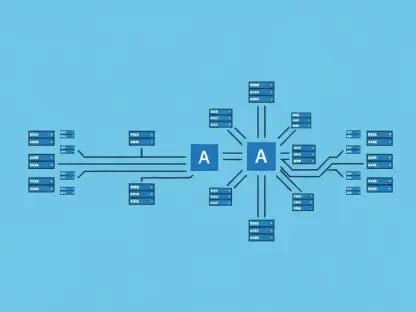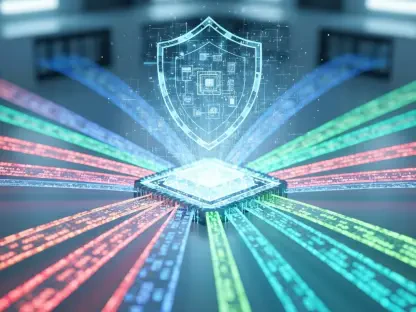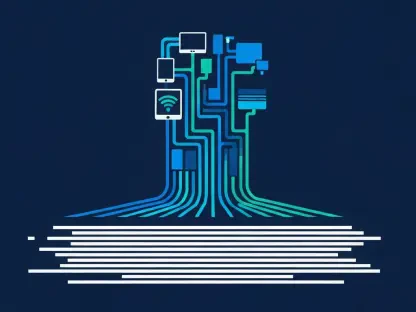As the world grapples with surging energy demands, significant advancements in renewable energy, and the challenges posed by extreme weather conditions, utility companies are compelled to modernize grid infrastructures. This modernization is essential to ensure continuous power delivery, public safety, and economic stability. However, with increased interconnectivity of power substations and renewable facilities, cyber threats have become more sophisticated and pervasive. Therefore, utility companies must integrate cyber resilience into their operational strategies to fortify their systems against potential cyber threats. This approach is not just about defending against attacks; it’s about building a resilient energy grid capable of withstanding and recovering from such threats.
Embed Cybersecurity into the Network
To effectively tackle the evolving landscape of cyber threats, it is imperative for utility companies to integrate cybersecurity directly into their network infrastructure. This strategy involves simplifying security operations and reducing costs by embedding security features into networking equipment. Building a wide area network (WAN) that is secure by design will ensure that it evolves with the dynamic needs of the organization. With the broad deployment of smart grid devices from urban areas to rural locales, the network must connect an extensive range of devices using available backhaul technologies, making security integration crucial.
Given the expansive nature of grid assets which are often located remotely, security cannot be an afterthought or a mere add-on. Instead, security needs to be seamlessly fused into the network infrastructure to address space constraints and enhance efficiency. Industrial routers equipped with modular WAN interfaces are instrumental in accommodating evolving connectivity needs. These routers facilitate smooth transitions between technologies such as the various iterations of 4G/LTE and 5G, both private and public. Furthermore, ruggedized routers and switches designed with industrial certifications ensure safe deployments even within the most challenging environments utility companies may face.
Beyond hardware advancements, embedding advanced cybersecurity capabilities within routers enhances protection. Features like application layer firewalls and Next-Generation Firewalls (NGFWs) are essential to safeguard critical infrastructure. The ability to segment networks, utilize application recognition, and enforce detailed traffic management policies allows utilities to maintain flexibility while securing network operations. Coupled with intrusion detection and prevention systems, utilities can stay ahead of potential threats, reinforcing their defense mechanisms against cyberattacks and ensuring steady power delivery.
Restrict Uncontrolled Physical Access
To fortify the security of field networks, it is crucial to implement robust measures that prevent unauthorized physical access to networking components. Since these networks are often deployed in difficult-to-regulate locations, securing each connection point of the networking equipment becomes paramount. Employing zero-trust security principles is imperative to safeguard against potential breaches in case black-hat hackers gain physical access to network components installed in vulnerable areas.
Advanced security solutions, such as those provided by Cisco Industrial Routers, enable administrators to strictly control which devices can connect to network ports by verifying endpoint MAC addresses. Utilizing platforms like the Cisco Identity Services Engine (ISE) empowers utilities to effectively manage asset identities and enforce comprehensive security policies at scale. This zero-trust framework ensures that only authorized devices gain access, adding a critical layer of defense to the overall network security strategy.
Furthermore, implementing these granular access controls not only prevents unauthorized connections but also limits the exposure of critical network components to potential threats. As cybercriminals continually evolve their tactics, maintaining stringent access control protocols becomes vital to ensure that sensitive infrastructure remains protected. This approach effectively mitigates the risk of intrusions, preserving the integrity of utility networks and reinforcing overall grid security.
Implement Network Segmentation to Mitigate Potential Breaches
Segmentation plays a pivotal role in ensuring utility networks remain secure when a device gains access to the network. By implementing network segmentation, the communication between devices is restricted to only the necessary interactions required for their respective tasks, thereby minimizing the risk of widespread vulnerabilities. Within utility grids, not all devices, such as those in substations or renewable production sites, need to interact with one another. Limiting communication to only essential interactions not only secures the network but also diminishes the potential impact of any breaches.
Segmentation extends the benefits of isolating critical systems, such as power distribution controllers, from less sensitive systems, like video surveillance equipment, to prevent malicious traffic from spreading throughout the network. This strategic separation aids in minimizing the disruption that could occur if a device becomes compromised. Consequently, network segmentation serves as a “defense-in-depth” approach, ensuring that if one part of the network is penetrated, the remainder remains secure.
Employing advanced segmentation solutions, such as those offered by Cisco Industrial Routers, enables the protection of critical assets by isolating traffic flows into separate virtual networks. By leveraging tools like the Cisco Identity Services Engine (ISE), security managers can define and enforce segmentation policies at scale. This approach not only streamlines operations but also offers the flexibility to customize network security to match evolving organizational needs, reinforcing the ongoing commitment to maintaining a fortified utility network.
Simplify Operations Through Centralized Orchestration and Automation
In the complex environment of grid infrastructures, spanning numerous locations, centralizing network operations becomes critical for effective security management. Cisco Catalyst SD-WAN Manager, combined with Cisco Industrial Routers, presents an ideal solution for these demanding scenarios. This integration marries enterprise-level performance and security with industrial-grade reliability, creating an optimal foundation for managing utility networks.
The Catalyst SD-WAN Manager centralizes the configuration of routers and security policies, effectively addressing gaps in the network’s defense. By unifying security policies and simplifying deployment, this manager streamlines grid network management on a large scale, supporting large utility networks. With its orchestration and automation capabilities, the need for manual configurations is drastically reduced, expediting deployment timelines, and ensuring consistent policy enforcement across the grid.
Additionally, enhanced features such as automated VPN provisioning, security key management, and large-scale tunnel provisioning are integral to reducing the operational burdens associated with maintaining a sprawling network. This comprehensive approach ensures that utilities can achieve efficiency and flexibility in their network management, ultimately allowing these organizations to adapt rapidly to changing technological demands. Emphasizing such automation and centralized management practices offers an enhanced security posture while optimizing operations within utility networks.
Building a Cyber-Resilient Future
As global energy demands surge, the rapid advancement of renewable energy technologies and the increasing challenges of severe weather conditions are pushing utility companies to modernize their grid infrastructures. This modernization is crucial not just for the reliable delivery of power, but also for maintaining public safety and economic stability. However, as power substations and renewable energy facilities become more interconnected, the risk of cyber threats is rising. These threats have grown in sophistication and prevalence, necessitating that utility companies embed cyber resilience into their operational plans. This strategic approach is vital not only to defend against cyberattacks but also to construct an energy grid that is resilient—capable of withstanding interruptions and swiftly recovering from diverse threats. By focusing on both prevention and recovery, utility companies can ensure a steady power supply while safeguarding critical infrastructure against evolving cyber challenges.









